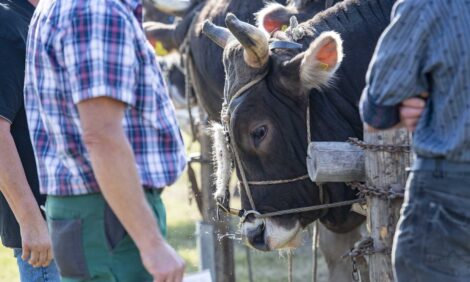



Cattle Methane Emissions Lower Than Previously Thought
AUSTRALIA - Methane emissions from cattle in Australia are 24 per cent lower than previously estimated, equivalent to 12.6 million tonnes of carbon dioxide a year, following analysis of new Australian research data.This resulted in an update of the National Greenhouse Gas Inventory (NGGI).
The research was undertaken by scientists and officials from across Australia, and was based on data collected over eight years of research into ways to reduce methane emissions in Australian livestock as part of Meat and Livestock Australia’s (MLA) methane abatement research programs.
The new methodology also brings the NGGI in line with the estimates of the Intergovernmental Panel on Climate Change (IPCC), the leading international body on the assessment of climate change.
CSIRO’s Ed Charmley said the work was conducted because of concerns about the large differences between national and international methane emission figures for Australian cattle, and doubt surrounding the accuracy of previous calculation methodologies used for cattle, particularly northern Australian cattle.
Previous calculations over-estimated methane emissions
“Different methods used to calculate emissions from livestock in temperate and tropical regions were based on studies done in the 1960s and 1990s, mainly with dairy cattle,” Dr Charmley said.
“Both of these past methods were found to be likely over-estimating the emissions from cattle.
“The revised method, which is based on improved ways of estimating ruminant methane emissions from forage-fed beef and dairy cattle, be they in temperate or tropical regions, has been tested against international defaults provided by the IPCC and found to give consistent methane yields.”
MLA General Manager for On Farm Innovation, Matthew McDonagh, said the results of this Australian research provide an accurate dataset which clearly show our cattle contribute substantially less to methane emissions than previously believed.
“This revelation clearly shows livestock-based emissions are nowhere near what they were thought to be and will help improve the accuracy of Australia’s national greenhouse gas emissions estimates,” Dr McDonagh said.
“This is positive news for the Australian livestock sector as it seeks to continually improve its production efficiencies and demonstrate its environmental credentials.”
Management measures can reduce cattle methane emissions
MLA Manager for Sustainable Feedbase, Tom Davison, said the latest research findings from the National Livestock Methane Program (NLMP) also showed there are a number of simple management measures producers can implement to substantially reduce methane emissions while increasing productivity.
“Some of these are as simple as integrating leucaena into grazing systems, improving growth rates or herd reproductive performance, while other future techniques may include feeding red-algae to livestock and have been prioritised for further research,” Dr Davison said.
“We look forward to continuing to make further gains in this field for the mutual benefit of both our livestock industries and environmental sustainability.”
The analysis of Australian cattle research data was conducted by CSIRO, the Victorian Department of Economic Development, Jobs, Transport & Resources, the New South Wales Department of Primary Industries, the University of New England and the Queensland Department of Agriculture and Fisheries, with technical input from the Australian Government Department of Environment.
Further Reading
The new method has been published online this month in the journal Animal Production Science.
TheCattleSite News Desk


